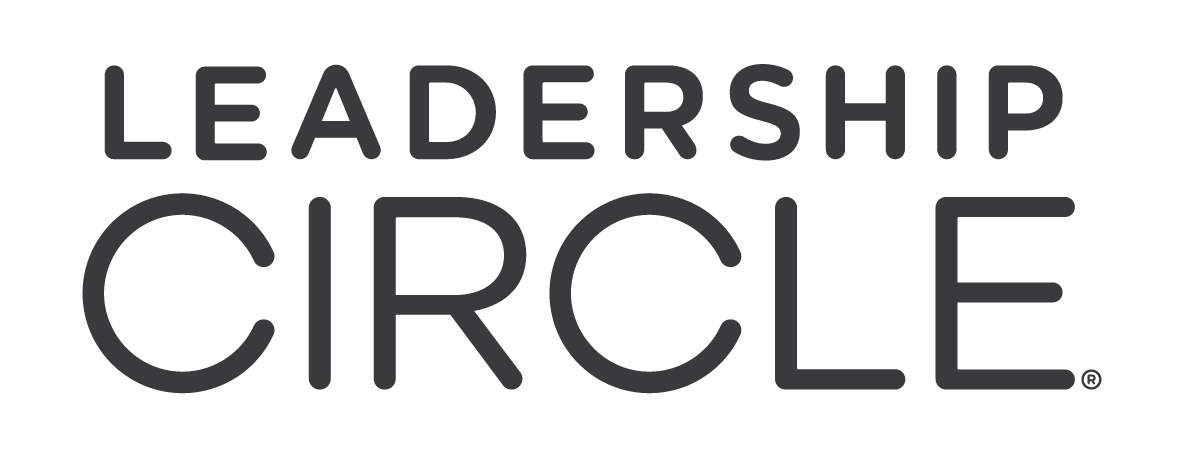Organizational change is no longer a one-time project. It’s constant, and often messy.
And truthfully, traditional leadership roles aren’t built to handle complexity like this. What companies need now is someone who can own digital transformation.
Someone who isn’t afraid to take smart, calculated risks and to lead an organization from where it is now to where it wants to go. Let’s take a closer look at what a Chief Transformation Officer (CTO) is and how this role is enhancing leadership strategy for the better.
What’s a Chief Transformation Officer?
A Chief Transformation Officer (CTO) leads company-wide change. They align strategy, business operations, and technology to help a company adapt and grow.
Practically, this might look like:
- Breaking down silos between departments for better cross-functional collaboration.
- Overseeing the rollout of new tools or tech that improve how teams work.
- Guiding a company through a major strategy shift after declining sales.
- Helping a company expand into a new customer segment or region.
- Driving culture change to support new business goals.
- Streamlining messy workflows that slow down growth.
Any organization that wants to stay competitive and resilient will eventually turn to a CTO for support. That’s why CTOs are redefining what effective leadership looks like today.
Below, you’ll find some of the main ways CTOs are reshaping leadership strategy as we know it.
Bringing the focus and flexibility companies need to move forward
Transformation often happens in pockets. IT upgrades systems, marketing launches campaigns, and operations tweaks processes. But these efforts rarely connect. This disconnect leads to fragmentation (and frustration) across the business.
The CTO bridges this gap and acts as a connector across departments. Their responsibility to keep all departments focused on a common goal is their most vital one.
For example, imagine a manufacturing company facing delays because their supply chain and production teams aren’t fully synced. With a CTO on board, the entire organization would have notice of a new plan, how it’ll roll out, and who’s responsible for managing it. This would keep the entire company informed and moving together toward success.
Without this, teams would rely on stressed-out project managers and account managers to relay messages between Slack and Gmail. (Spoiler alert: They’d likely get lost in the daily work shuffle, so nobody would really know what’s going on.)
Balancing High-Level Vision With Practical, Tactical Execution
Transformation fails when leaders focus only on the high-level vision or solely on day-to-day tasks.
CTOs help by translating big-picture strategies into clear, measurable plans to ensure progress.
Take a company expanding into new international markets. The vision sounds exciting, but without corporate tax planning strategies, compliance issues could quickly derail momentum. A strong CTO would need to partner with finance early to understand all tax implications. (Like how different regions treat profits or structure incentives.) This’ll affect how teams roll out operations, allocate resources, and measure ROI.
This intersection between where an org wants to go and what it needs to do to get there is exactly why we need CTOs today.
Keeping Tech at the Core (But Knowing It’s Not the Full Picture)
When people hear “Chief Transformation Officer,” they often think “tech guy.” But the role goes beyond technology. Yes, digital tools are pivotal to innovation, but they’re just one part of the equation.
Transformation means rethinking how the business creates value.
Transformation that adds value:
- Re-imagines customer experience.
- Challenges business models.
- Questions legacy processes.
- Refines communication.
So, yes, a CTO might recommend that an org start using board meeting software and lead the integration of it. But they wouldn’t stop there. They’d also review how to restructure board meetings to better align with company goals. And how to make those meetings more focused, efficient, and strategic.
They’d also encourage a culture of accountability. Each board action item would get tracked and followed up on.
The best term to describe how this affects leadership strategy going forward? Holistic. Modern leadership will need to approach change management and growth strategies from all angles to foster meaningful transformation.
Using Data Analytics as a Continuous Accountability Lever
Modern CTOs run business transformation on data.
They set clear success metrics early, track progress openly, and hold teams accountable. Dashboards and regular check-ins help them maintain team momentum and catch problems before they escalate.
They might recommend an employee experience app, such as Blink, to help with this, so teams have an easy way to connect on data and see their progress.
This transparency is what leadership has needed to cut through confusion and build trust across the company. When progress is visible, modern-day leaders can spot roadblocks easier and adjust quickly.
Shifting the Obsession With Efficiency to Company Resiliency
Transformation isn’t a campaign with a fixed end date. It’s an ongoing muscle that companies must build to stay evergreen.
CTOs facilitate this. They embed transformation as a core business capability, rather than a one-time project. (We all remember when the pandemic tested this muscle.) Companies with strong transformation capabilities led by effective CTOs rapidly shifted to remote work, adjusted supply chains, and launched new digital products.
Those without this capacity to pivot struggled. And some, sadly, fizzled away.
This is another major way CTOs have affected leadership as we know it. Agility and resilience have become org leadership staples.
What This Means for Your Leadership Team
If your company is navigating rapid change and complexity, think about ways you can empower a CTO.
Consider using the following checklist to make the most out of your partnership:
CTO integration checklist for orgs
Make sure to:
- Give your CTO clear authority and ownership to break down barriers. Without mandate and autonomy, transformation efforts risk stalling in silos or conflicting priorities. The CTO needs to be the go-to leader who coordinates resources, resolves disputes, and drives company alignment.
- Align the CTO’s transformation roadmap tightly with your business goals. Transformation isn’t abstract. It must deliver tangible outcomes, such as revenue growth, market expansion, or an improved operating model.
- Build and empower cross-functional teams. Create squads or task forces led or coordinated by the CTO to break down silos and speed up execution.
- Invest in change management programs that cultivate an adaptive culture. Support initiatives that promote agility, learning, and experimentation.
- Provide ongoing learning resources. (Continuous training and access to emerging tools keep your workforce adaptable.)
- Tie transformation outcomes directly into leadership performance evaluations. Hold leaders accountable to reinforce focus and resource allocation.
- Maintain clear, consistent communication. Request frequent updates to foster transparency and trust. Your CTO should act as a key communicator and translate complex strategies into relatable stories that inspire employee action.
Speaking of relatable stories, one of the CTO’s most underused superpowers is internal storytelling. If you work with one, encourage them to flex it. You’ll notice that when your people understand why change is happening, they’ll show up differently.
Wrap Up
CTOs are essential for managing ongoing change at any forward-thinking organization.
They affect leadership strategy by:
- Bringing the focus and flexibility needed to move forward
- Balancing high-level vision with practical, tactical execution
- Keeping technology at the core while understanding it’s not the full picture
- Using data as a continuous accountability lever
- Shifting the focus from efficiency to building company resiliency
These five pillars make CTOs key to modern leadership practices and strong, agile workplaces.
Need support with change management or leadership development? Empower your org with top-tier coaching and training. Book a call now to learn more.
FAQs
How is a Chief Transformation Officer different from a CIO or CTO?
A Chief Transformation Officer focuses on driving company-wide change beyond just technology, while CIOs and CTOs primarily manage IT systems and tech strategy. The CTO’s role is broader. It’s about aligning all parts of the business to transform how the company operates and competes.
When should a company hire a CTO?
You should hire a CTO when your company faces significant growth challenges, culture shifts, or strategic changes that require leadership across multiple departments. If you need someone to guide complex change and connect different teams, a CTO is the right choice.
What skills make a great CTO?
A great CTO combines strategic thinking with the ability to influence across functions. They excel in data literacy, leadership in uncertain situations, and bridging the gap between technology and business objectives.
Can small businesses benefit from a CTO?
Yes, small businesses can definitely benefit. Any company dealing with complex change can use a CTO’s expertise to adapt faster and build a culture ready for growth.
How does a CTO impact company culture?
A CTO shapes company culture by encouraging agility, teamwork, and continuous learning. They help embed a mindset where change is seen as an opportunity rather than a threat.
Is the CTO role replacing other leadership positions?
No. The CTO role complements existing leadership by focusing on transformation and alignment, working alongside other executives to drive change effectively.
Sanjeev Kumar is a guest contributor to the Leadership Circle blog.






It’s refreshing to see the importance of cross-functional collaboration highlighted in the CTO role. With businesses constantly evolving, silos often become a major barrier to progress. A leader focused on bridging those gaps is more crucial than ever.
Your blog is a testament to your expertise and dedication to your craft. I’m constantly impressed by the depth of your knowledge and the clarity of your explanations. Keep up the amazing work!
Your blog is a beacon of light in the often murky waters of online content. Your thoughtful analysis and insightful commentary never fail to leave a lasting impression. Keep up the amazing work!
This was beautiful Admin. Thank you for your reflections.
Your blog has become an indispensable resource for me. I’m always excited to see what new insights you have to offer. Thank you for consistently delivering top-notch content!
Attractive! This has been a truly amazing entry. Thank you for providing these valuable details.
Your blog is a testament to your dedication to your craft. Your commitment to excellence is evident in every aspect of your writing. Thank you for being such a positive influence in the online community.
Your writing has a way of resonating with me on a deep level. It’s clear that you put a lot of thought and effort into each piece, and it certainly doesn’t go unnoticed.
I wanted to take a moment to commend you on the outstanding quality of your blog. Your dedication to excellence is evident in every aspect of your writing. Truly impressive!
Your blog is a shining example of excellence in content creation. I’m continually impressed by the depth of your knowledge and the clarity of your writing. Thank you for all that you do.
Your writing is a true testament to your expertise and dedication to your craft. I’m continually impressed by the depth of your knowledge and the clarity of your explanations. Keep up the phenomenal work!
Your blog is a treasure trove of knowledge! I’m constantly amazed by the depth of your insights and the clarity of your writing. Keep up the phenomenal work!
Your writing has a way of making even the most complex topics accessible and engaging. I’m constantly impressed by your ability to distill complicated concepts into easy-to-understand language.
Along with every thing which seems to be building within this specific subject matter, all your viewpoints are very exciting. On the other hand, I appologize, but I do not give credence to your entire plan, all be it exhilarating none the less. It seems to everybody that your remarks are generally not totally rationalized and in actuality you are generally your self not even fully certain of your argument. In any event I did take pleasure in reading through it.